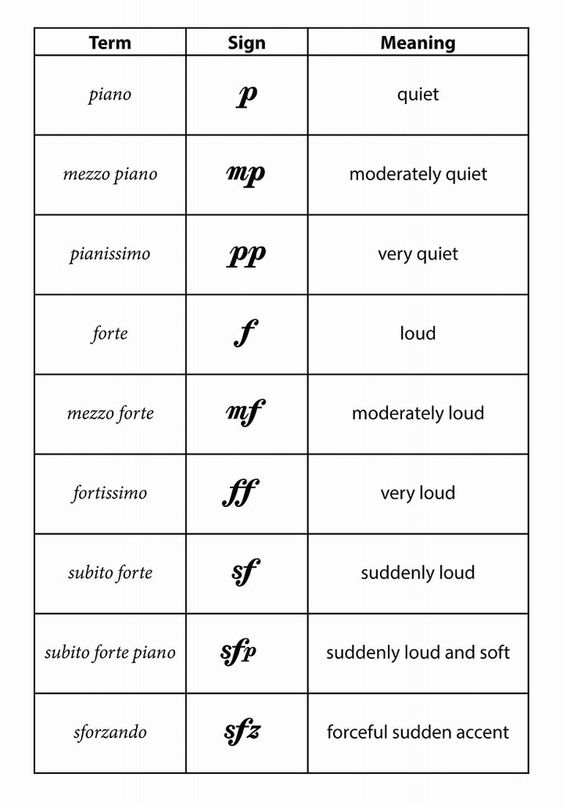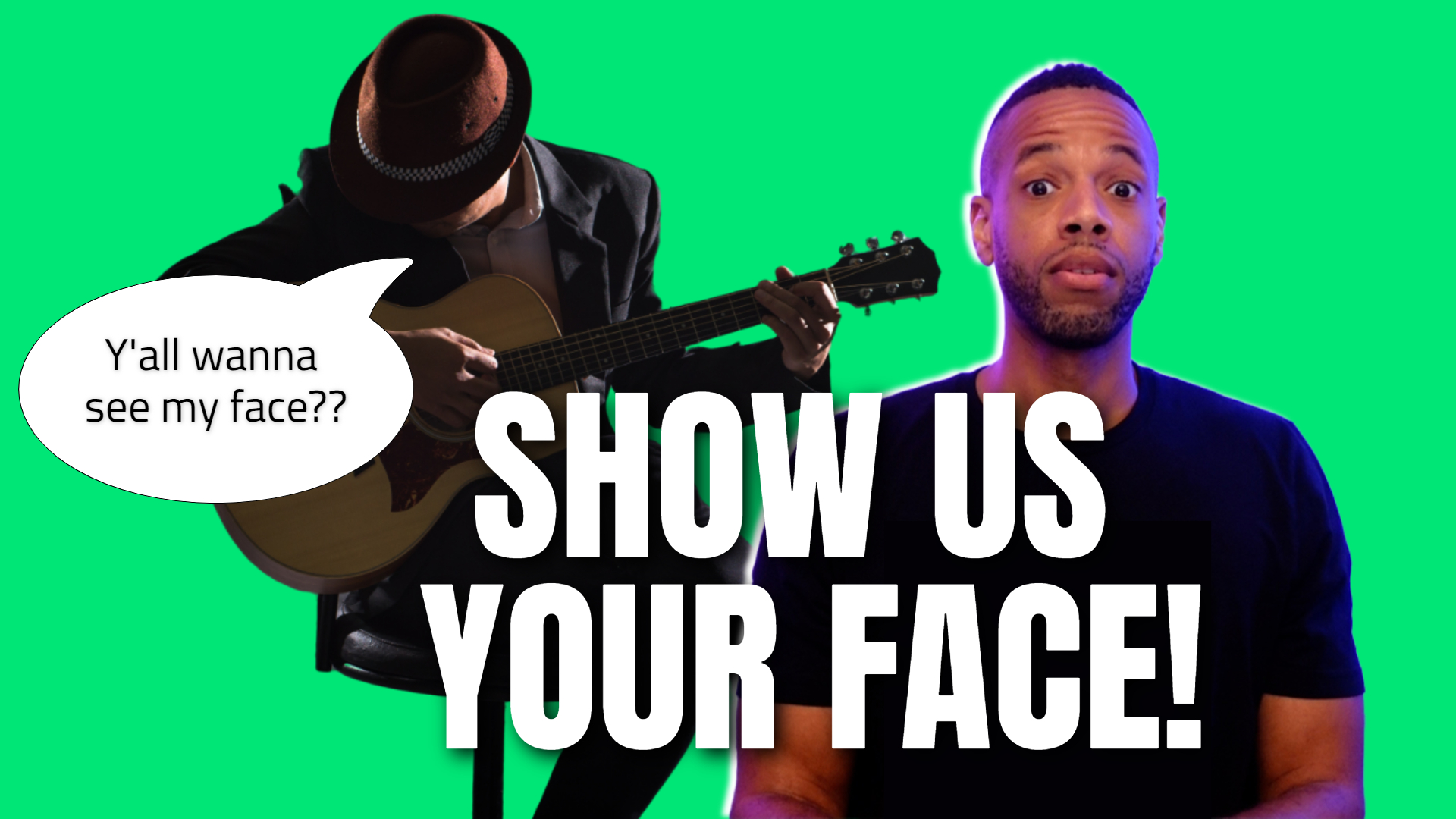What Is Forte In Music? Clear Definition & Examples

*This article may contain links to affiliate products & services. We have reviewed these services to try and ensure the highest quality recommendations*
Written by Ramsey Brown.
Forte is not a musical term that is commonly discussed, even though it is used so commonly within music. In its truest definition, forte translates to ‘loud’ in Italian — but what is its musical definition and relevance to artists?
Forte is symbolized by the letter ' f ' and can be found on sheet music, scores, songbooks, and other compositions. Unless you’re someone who has studied music theory or understands music notation, you probably haven’t recognized this symbol or given it much thought.
This marking is an important element of musical performances and is crucial to know if you are aspiring to play or study music. In this article, we are going to take a deep dive into forte and its meaning in music. After this reading, you’ll know the exact musical definition of forte, when it should be used, and the most famous examples of forte being used in music. So, let’s get to it!
What is Forte in Music?
As we mentioned, forte by definition means loud or strong and is represented by the marking, f. In music, this is a directive in compositions that indicates certain passages to be played or performed loudly.
Forte provides contrast to music by giving variation in loudness between notes or phrases. It’s objective shows composers, instrumentalists, and singers how soft or loud the music played will be.
The symbol of forte is often displayed with other symbols that refer to the music being played from soft to loud or from loud to soft, or also known as crescendo and decrescendo.
The opposing symbol to forte is p or piano, which means soft. This notation emphasizes that music marked in a passage should be considerably quieter than f.
These musical notations are written or printed to indicate Dynamics in music. Music dynamics are a crucial part of your music, whether you are studying music, becoming a singer, or learning to play an instrument.
What is Music Dynamics?
Before we can discuss forte in depth, we must first understand the meaning and purpose of dynamics in music — as the two elements work in conjunction together within a music piece.
Dynamics refers to the volume of a sound or note and is represented by marking within a passage. The two basic dynamic markings in music are:
f or forte, meaning loud or strong.
p or piano, meaning quiet.
The execution of dynamics indicates a change in loudness or softness as the music passage is played. It’s determined by how strongly a musician would press the keys of their instrument or use their voice to deliver a note.

Used effectively, dynamics help musicians sustain variety and interest in a musical performance, and communicate a particular emotional state or feeling. Dynamics are one of the expressive elements of music, as it evokes emotion and communication between the musician and the audience.
Dynamics work to give a piece of music its distinctive character. Any change in the music dynamics will greatly affect how the music feels and how it’s interpreted by the audience.
These dynamic markings within music are always relative. Meaning, f never indicates a precise level of loudness, it merely indicates that the marked music passage should be considerably louder than f.
There are many factors affecting the interpretation of a dynamic marking. Some voices will naturally be louder than others and some instruments register louder than others.
For example, a trumpet is louder than a piano, so even if a piano is set to play a note in forte, it would still sound softer or lower. Likewise, a guitar playing a forte would still be lower than a tuba playing a piano note.
Other Dynamic Markings
The basic dynamic indications are piano and forte. Piano means quiet or soft and is indicated by p, while forte means loud or strong and is marked by f.
In addition to these 2 basic dynamic degrees, musicians use other more subtle degrees in music notation to express emotions and loudness:

Why Are Dynamics Important In Music?
As you now know, dynamics give contrast to the loudness and softness of a musical piece. The combination of these different dynamics changes the mood and the emotions in a single musical phrase and adds character to every musical composition that includes them.
When playing music and experimenting with dynamics, the performer has slight freedom with their own interpretation and execution dynamics. This allows the musician to improvise and have more of a personal creative expression throughout their performance.
Dynamics are what give a particular feeling to the listener when music is played. In movies for example, the auditory element is just as important as the visual element. The music in film is essential to triggering an audience’s emotion and reaction.
The dynamics used in music build character to a piece of work and give depth to the listening experience. Whether it be a soft, melodic intro that makes you feel peaceful or a loud intense build up that gives you excitement — this is all done through music dynamics.
Examples of Dynamics Being Used
Music is the world’s universal language and is naturally a mood enhancer — which makes it a crucial part of of the film industry. Movie scores are the perfect way to examine dynamics and recognize the effect it has on the listener. Below are some examples of dynamics being used in famous movies and songs:
If you’ve seen the movie Interstellar, you know that the music plays a big role in the overall dramatic effect of the film. Because the movie deals with the vastness of universe and the enormous magnitude of space, they wanted to incorporate sounds with the same big, exhilarating feeling.
When the soundtrack begins, the music is so low that a listener may think they need to crank up their volume to hear it. Minutes into the score, a big explosion of sound comes in. This big sudden sound brings a sudden sense of character, excitement, and emotion to the listener, reflecting the overall story behind the film.
"It's My Life" is a song by rock band Bon Jovi. This hit single is a great example of both vocal and instrumental dynamics being used in a popular song that most everyone knows and loves.
The lyrics of this song quite literally indicate dynamics as the lead singer Jon Bon Jovi says:
“You're gonna hear my voice
When I shout it out loud”
This phrase is sung in a much lower tone and volume (p) than the following verse in f:
”It's my life
It's now or never
I ain't gonna live forever
I just want to live while I'm alive”
These different variations of loudness thorough this track, both instrumentally and vocally help to paint the picture of the songs overall meaning and feel to the listener.
Beethoven composed this symphony between 1804 and 1808 and is one of the most played classical compositions full of contrasting dynamics.
This famous composition has a huge climax that climbs on and on, displaying some of the most notorious sounds and dynamics in the history of music. Symphony No. 5 was truly groundbreaking in terms of both its technical and its emotional impact, leaving a large influence on composers and music critics then and today.
When your song is ready to go, it's time to start promoting it to potential fans! Omari has the best organic promotion services money can buy. With packages for Spotify, TikTok, Instagram, and YouTube, we will get your music the traffic and attention it deserves! Click below for more information.
SPEAK YOUR MIND
Leave a Reply
How This INDIE Artist Got Over 67,598,275 Streams On ONE Song
Join the No-Nonsense Music Marketing Newsletter to get the most valuable weekly case studies and strategies to grow your music business!





3 replies to "What Is Forte In Music? Clear Definition & Examples"
Great article, Omari! I love how you broke down the concept of forte in such an understandable way. The examples really helped solidify my understanding. Can’t wait to read more of your posts!
I loved this post! Your clear definition of forte really helped me understand its significance in music. The examples you provided made it so much easier to grasp how dynamics play a role in composition. Thanks for the insights!
This is an interesting and informative post on forte in music. It provides a clear definition and examples, which will help me understand the concept better. Thank you for sharing this information!